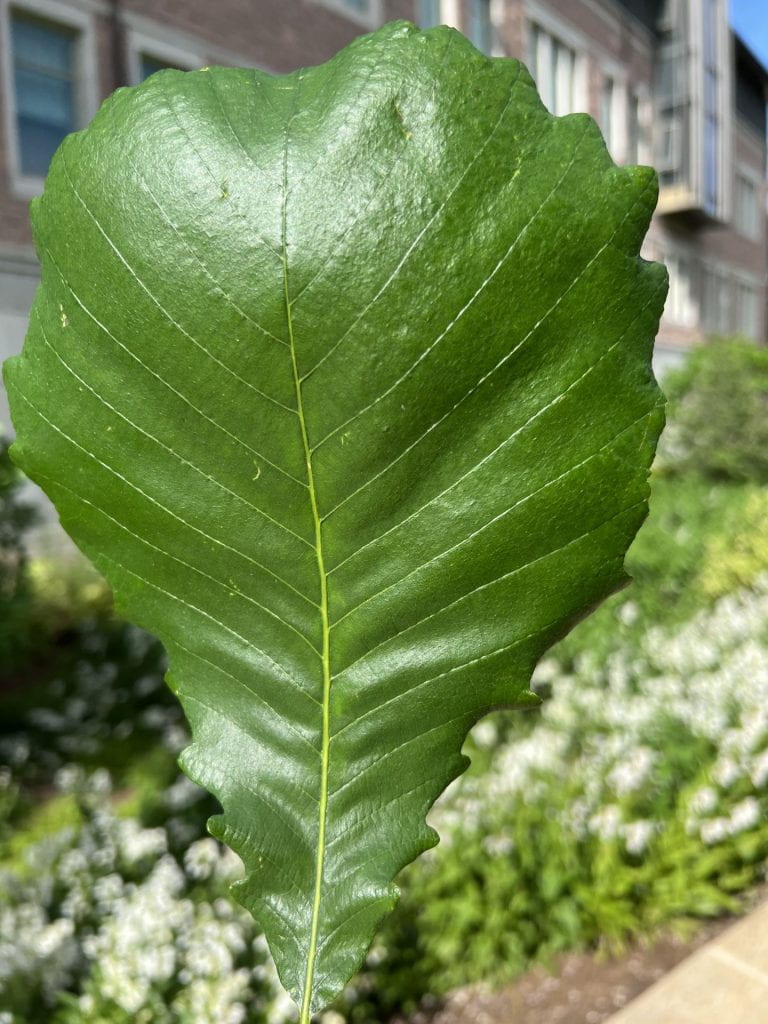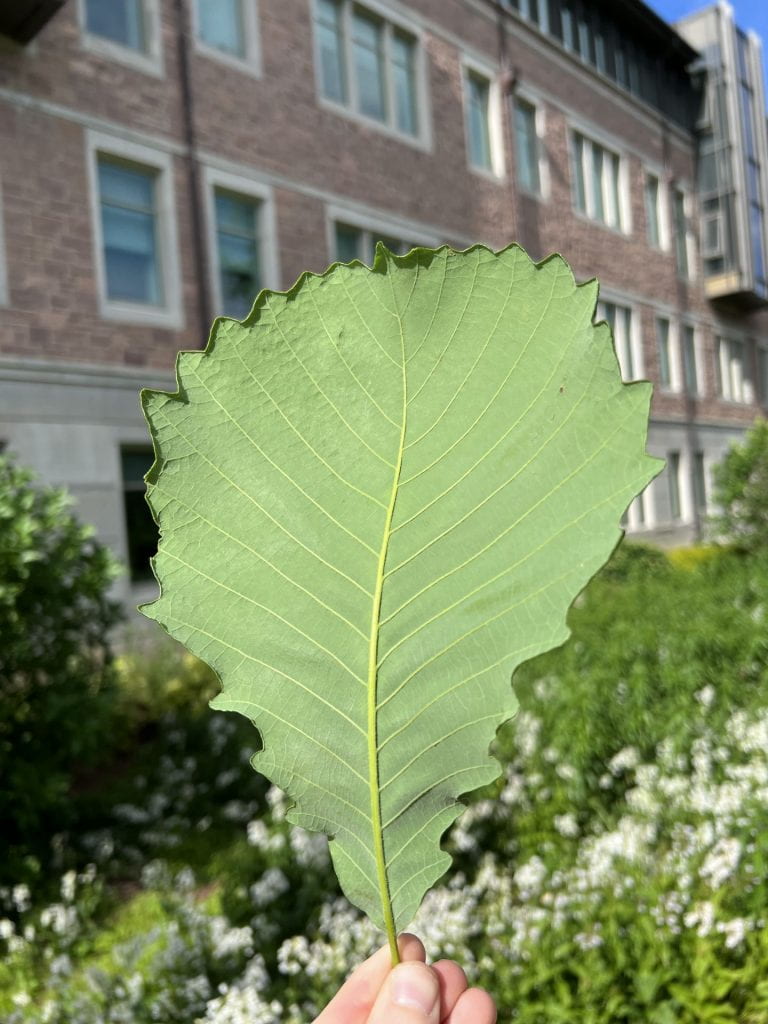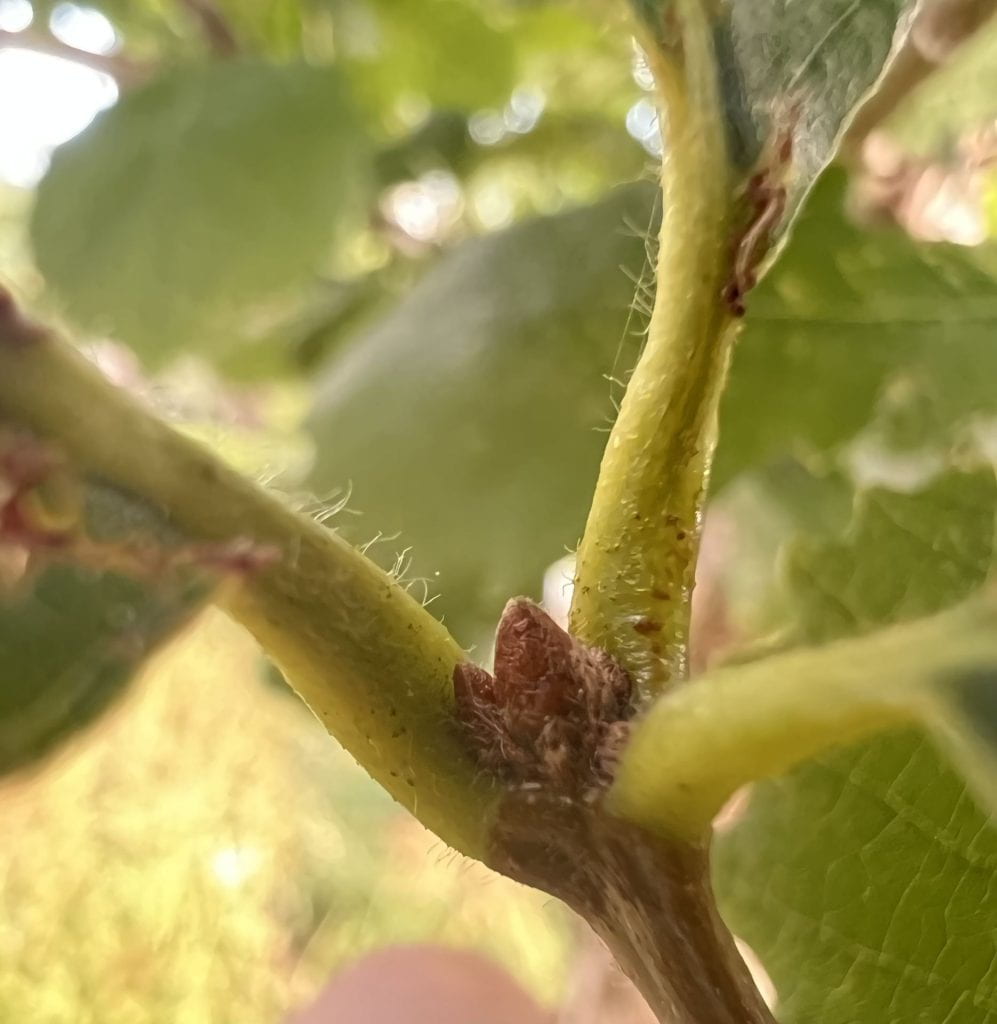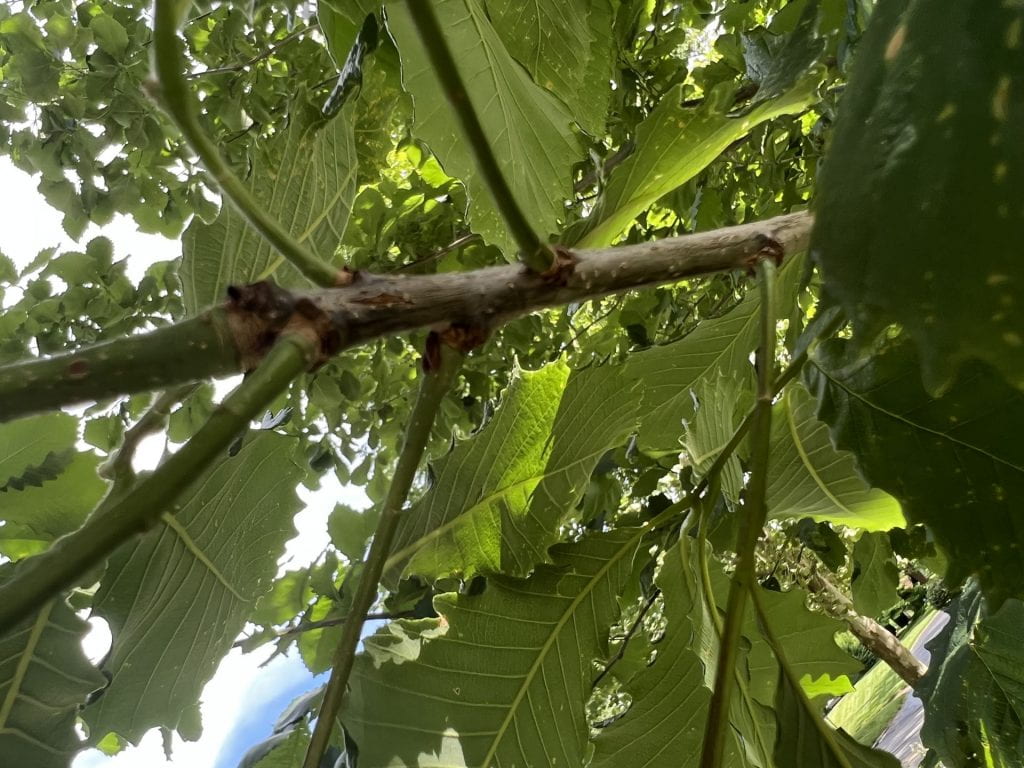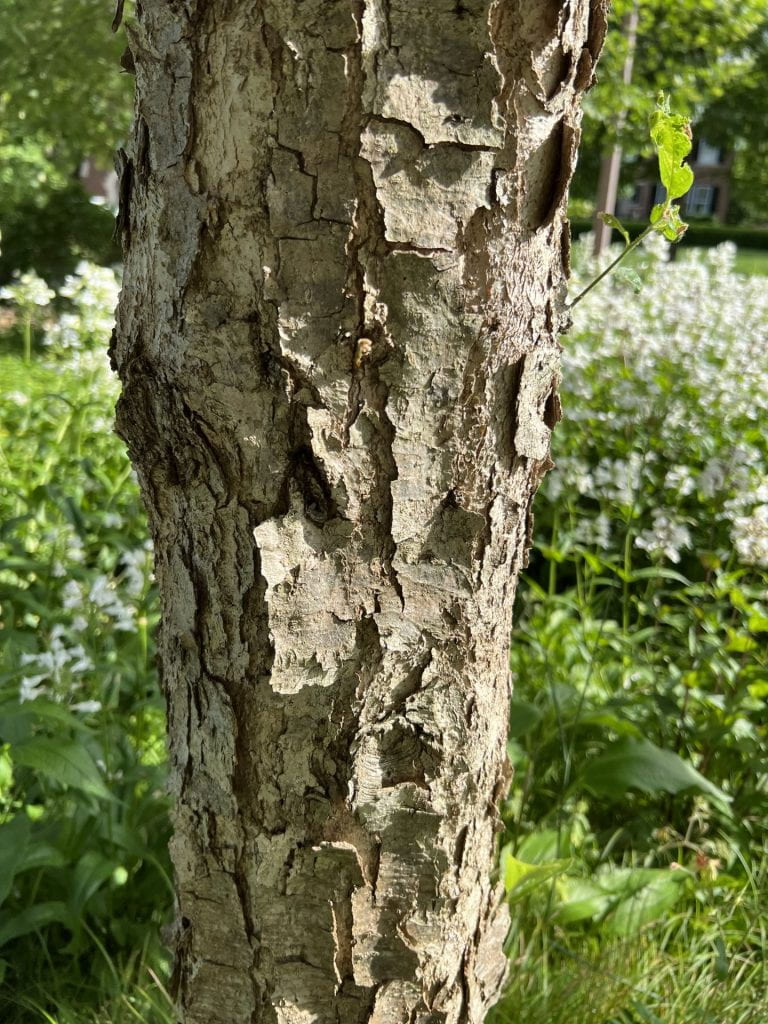Leaf Identification
The Swamp Chestnut Oak has leaves that are simple (no leaflets), alternately arranged on the stem, unlobed, and obovate in shape. The leaves have broad, rounded teeth along their margin and do not have a tapered tip. The leaves are dark green above and yellow-green and pubescent (hairy) below.
Twig and Bud Identification
The twig matures from olive green to brown and is not zig zag. The terminal buds are clustered; they are ovoid, chestnut-brown, and pointed at the tip.
Bark Identification
The bark is a tan color and has thin, flaky plates that are often rectangular in shape.
Fruit Identification
The fruit of the Swamp Chestnut Oak is an acorn. The acorns can reach 1″ to 1 1/2″ in length, are ovoid in shape, and mature to a dark brown color. The cup is bowl-shaped, scaled, and covers 1/3 of the nut.
Flower Identification
The flowers of the Swamp Chestnut Oak are monoecious; staminate (male) and pistillate (female) flowers are separate but on the same tree. The staminate flowers are in hanging greenish-yellow catkins (long, slender cluster of unisexual flowers) and the pistillate flowers are on short spikes along the stem.
Oak ID Tips
- The Swamp Chestnut Oak is similar in leaf shape to the Swamp White Oak, White Oak, and Chinkapin Oak. While the Swamp White Oak and White Oak have similar undulating leaf margins, those two species actually have lobes, which is seen by the larger sinuses between the lobes. The Swamp Chestnut Oak is not lobed.
- The Chinkapin Oak does not have lobes, but the leaf has a longer tapered tip, whereas the Swamp Chestnut Oak has a blunt tip, and is more noticeably obovate (almost upside down pear-shaped).
- Of the four oaks mentioned above, the Swamp Chestnut Oak also has the longest leaves, up to 11″.
